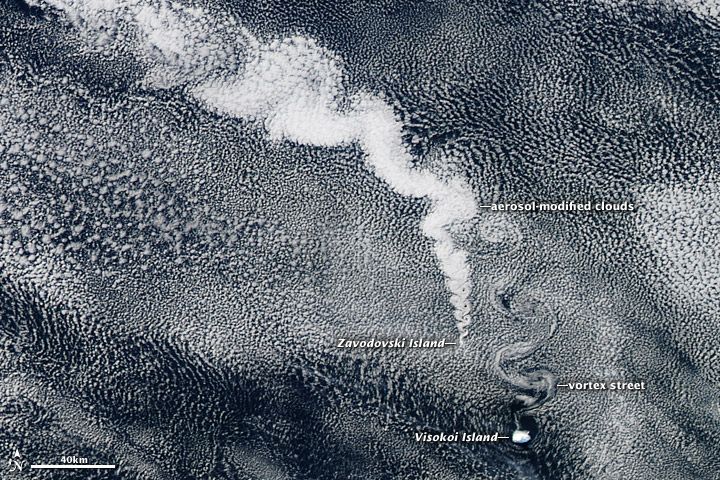
Earth as Art: Swirling Clouds

These clouds may look like they belong in a Van Gogh, but they were "painted" by Mother Nature.
This natural-color image taken by the Moderate Resolution Imaging Spectroradiometer (MODIS) on NASA's Aqua satellite on April 27, shows how low-level volcanic emissions, clouds, islands, and winds interacting in the atmosphere to make a stunning tableau.
Research has shown that has shown that low-level volcanic emissions (as opposed to explosive eruptions) can affect the atmosphere, which is what appears to be happening here, a NASA statement said.
Zavodovski Island, the northernmost island in the chain of the volcanic South Sandwich Islands, is dominated my Mount Curry volcano.
The volcano has been known to emit steady streams of gases and aerosols — tiny solid and liquid particles suspended in the atmosphere. Aerosols are a key precursor to clouds as they provide a surface that water molecules can glom onto, forming water droplets and eventually clouds.
The sulfate aerosols released by Mount Curry are just enough to seed clouds in the air masses passing over the island.
The plume drifting northward from Zavodovski Island is brighter than the other clouds around it because the sulfate aerosols are comparatively tiny, so the droplets they form are smaller, and smaller droplets give more surface area to reflect the sun's rays.
Sign up for the Live Science daily newsletter now
Get the world’s most fascinating discoveries delivered straight to your inbox.
Visokoi Island to the southeast has also created a disturbance in the atmosphere, though it's unclear whether the plume associated with it was created by emissions from its Hodson Volcano or by the topography of the island, according to the NASA statement. Islands can essentially create "wakes" in the air masses that run over them, much like a ship in the water.












